Improving Biodiversity on Your Farm
Download a pdf copy of this Information Note
As modern agriculture has a large focus on production, biodiversity has seen a decline over the years as farmers have utilised much of their land. This decline in biodiversity has now been identified as an environmental emergency with a focus now on enhancing the biodiversity on farmland. Increasing the biodiversity on your farm does not require losing large areas of your productive land, small and simple measures can be incorporated onto your farm which will enhance the habitat for many species of invertebrates, birds, mammals and many other species of plants and animals. The following sections highlight a variety of different measures that can be implemented on farm which will enhance the biodiversity.
Bee scrape
Solitary bees and bumblebees are part of the ecological system on farms as these insects will pollinate the wildflowers. A bare and exposed patch of soil on a sunny bank is the perfect location for a solitary bee to make their nest, making a bee scrape on farm is a simple and easy way to improve the number of solitary bees visiting the wildflowers whilst also improving the biodiversity.
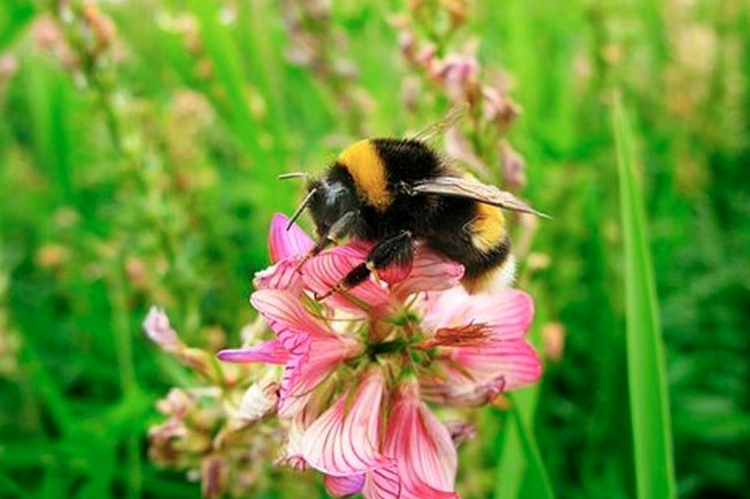
To create a bee scrape, remove all the vegetation to expose the soil on a sunny, south facing bank, an area of 1m by 1m will be sufficient however if you can make it larger than that it will be beneficial to the bees. Once the solitary bees have started to nest in the bee scrape, there will be small “drill holes” in the soil. To maintain the bee scrape, remove any new vegetation that begins to grow however, try to avoid disturbing the nesting bees. The solitary bees require a nearby pollen source so when choosing the location of the bee scrape consider where there are wildflowers or flowering shrubs which are close by.
Bat boxes
Bats are a natural pest control on farm as they eat midges, mosquitoes, moths, beetles and spiders. Midges can spread Schmallenberg virus, which affects cattle and sheep, therefore increasing the number of bats on your farm can help reduce and control the spread of this disease. Installing bat boxes in your buildings, ideally at least 4 m off the ground to make sure they are safe from cats and bird predators. The bats should have 24 hour access so it is important that the bats can fly in and out of the building, if that is not possible, locate the bat box onto the rafter under the ridgeline of the roof. Cleaning of the bat box is not required as the opening is on the bottom of the box.
Field margin
As agriculture has become more intensive with focus on the quantity of crop from the fields, habitats around the edge of the field have been reduced or lost. These margins are important habitats for many wildflowers, pollinators, insects, birds, and small mammal species. Field margins provide many species with food and shelter particularly when it is located next to a hedgerow. The recommended size of field margin is 2 metres wide as a minimum. If the field is used for grazing livestock, fencing the area off using electric fencing will stop animals from eating the margin. Using a wildflower pollinator mix in the field margin will increase the biodiversity value as more pollinators, insects and birds will utilise this area. If the field is being used for silage making or cereal crops, no fence will be required and ensuring that harvesting does not extend into the 2 m width from the field edge. Flail topping the field margin between September and February will encourage the wildflowers to germinate due to more light reaching the ground. The field margin does not require fertiliser as wildflowers do not thrive in nutrient rich soils, so it is important to avoid spreading fertiliser close to the field margin.
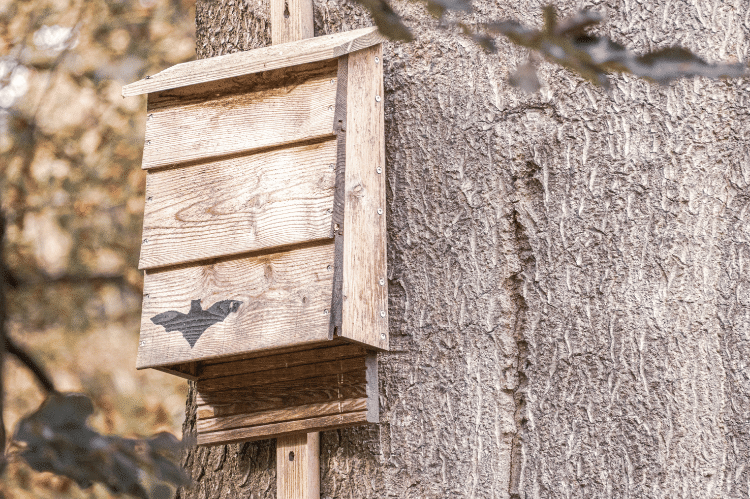
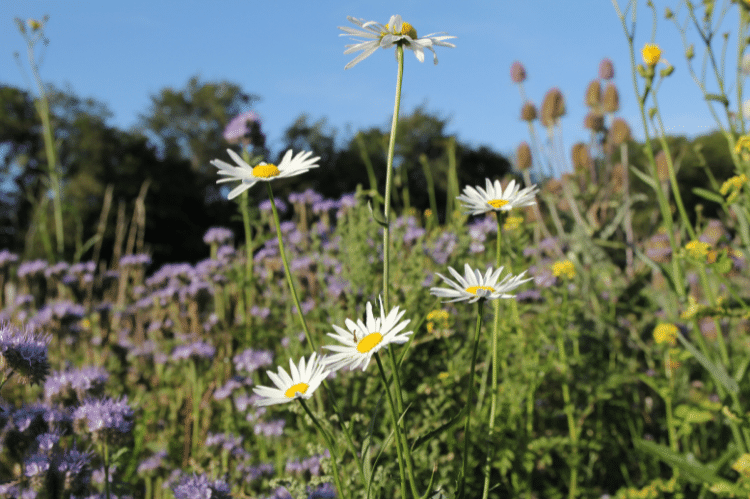
Hedgerows
Hedgerows have multiple benefits including providing habitat corridors between conserved areas of land, potential to tackle climate change as hedges sequester carbon dioxide in the same way as trees whilst providing food and shelter for a variety of birds, mammals and insects. Many species do not typically like moving across open spaces like a field which is used for grazing as there is no protection from predators, using hedges to create corridors between habitats allows these animals and insects to move freely while having protection from predators. Similarly, hedges can provide livestock shelter from the rain and sun as well as increasing the biodiversity value of your farm environment. To gain the full benefit of a hedge, it should be allowed to grow and mature fully with only the sides being trimmed yearly to avoid encroachment into the field. The roadside of the hedge will need to be managed to ensure encroachment on to the road does not become a danger to road users, in areas of poor visibility, you will need to consider if the hedge requires to be flailed to ensure good visibility for road users.
Multi-species Grassland
Many grass swards on farms today have a limited variety of grass species present, the most common species being used is perennial ryegrass. Some swards may have clover present, with only two plant species present there are very few species of insects and invertebrates that utilise these swards. The decline in the variety of grass species used by farms has resulted in a large decline of biodiversity as the habitat does not benefit the variety of species that would use a multi-species grassland. Many ground nesting birds are now completely absent or there are very low numbers as these birds are not able to exist on the modern farm where stocking densities are higher and harvesting occurs earlier due to the use of fertilisers and pesticides. Sowing a multi-species mix will provide a habitat that is suitable for ground nesting birds. Ensuring management of the sward is correct will aid its success, weeds will naturally be kept from establishing and the inclusion of clover will provide nitrogen due it’s nitrogen fixing abilities. Stocking rate needs to be kept low to allow the different variety of grass species to thrive, including a longer rotation (more than 21 days) will aid in the success of the sward.
Nettle patch
Five species of butterfly rely on nettles as part of their lifecycle, the nettles are known as the larval food plant for the caterpillars. Butterflies will lay their eggs on nettles and the larvae, caterpillars, will feed on the leaves of the nettles before becoming a butterfly. An easy and quick way to make a nettle patch is to dig a clump of nettles in the winter and transplant it to a suitable location. A grass field is most suitable, the transplanted nettles should be planted at least 20 metres away from hedgerows to provide protection from birds and allows the nettles to receive maximum sunlight. A nettle patch requires little management, cutting them in mid to late June will help encourage a second batch of butterflies to utilise this area for their young.
Pollinator patch
A pollinator patch is a habitat that is created for pollinating insects, it is an opportunity to re-introduce wildflowers that have been lost from farmland. Small mammals and birds will also benefit from this additional food source. Incorporating a pollinator patch within a field margin is the quick and easy way, ideally it should be located next to a south facing hedgerow.
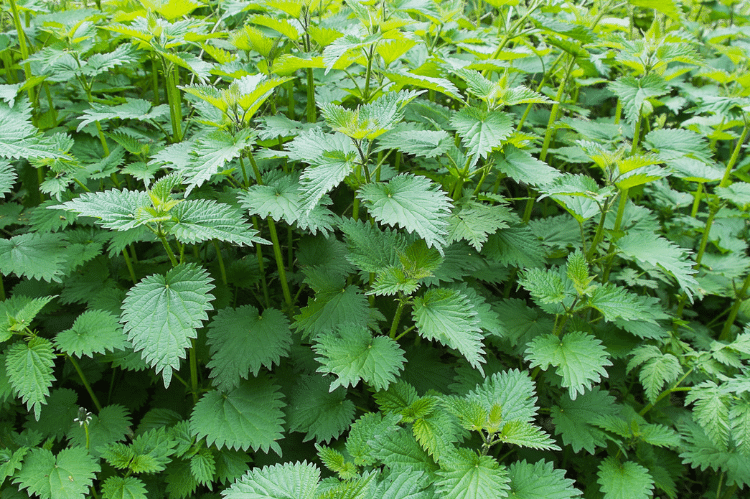
Pond
A pond can provide a habitat for a large range of wildlife including dragonflies, damselflies, frogs, newts, and many other species of plants and animals. For a pond to be successful, a continuous source of water that can be retained is required. When locating a pond on the farm, it is important to consider safety in terms of young children and livestock, this may include fencing the pond off. Management of a pond is easy and straight forward once it has been created; it is key that the pond retains water throughout the year as there are animals that will require water all year round. Generally, the plant and animal biodiversity will increase over time however if the pond does fill up with vegetation, it may need to be cleaned out to help bring the biodiversity of the pond back.
Wetland
In Scotland, there are many wetland areas which have poorly draining soils, high rainfall and low temperatures. These wetland areas are typically permanently or frequently waterlogged and include reedbeds, marshes, bogs and wet grassland. Wetlands provide an important habitat for a wide range of mammals, birds, invertebrates, amphibians and a variety of plant species. Wetlands play a vital role in flood mitigation and prevention whilst carbon sequestration is an environmental factor that benefits from the presence of these wetland areas. Wetlands are a natural habitat therefore they can not be created on farm, to re-introduce these habitats on farm, the drains will need to be blocked to allow the water to build up in the area. To maintain the wetland area and its biodiversity value, it should be grazed with the appropriate stocking level at the correct times throughout the year. Livestock should be removed for 3 to 4 months during the summer to allow flowering and seeding to occur so that there are new plants germinating in the spring. Like the field margin, the plant species which grow in wetlands do not require nutrient rich soils so there is no requirement for fertiliser or slurry in these areas.
Winter stubble
Winter cereals are becoming more common on farms; however, the early growth stages of these cereals have a lower biodiversity value than winter stubble from a spring cereal. Green cover crops will provide a variety of seeds and grains which are a vital food source for a variety of birds including Skylark, Goldfinch and Greenfinches. Winter stubble is also a great food source with grains left over from the harvest as well as the presence of wildflowers that have germinated. Small birds and seed-eating birds will utilise this habitat throughout the winter months, in the early spring time when food resources are particularly low, these winter stubbles are an important food source. Winter stubble can also be advantageous to the farm as it can reduce soil erosion, nutrient leaching and the plant matter that is available will enhance the organic matter of the soil which can aid the growth of the next crop.
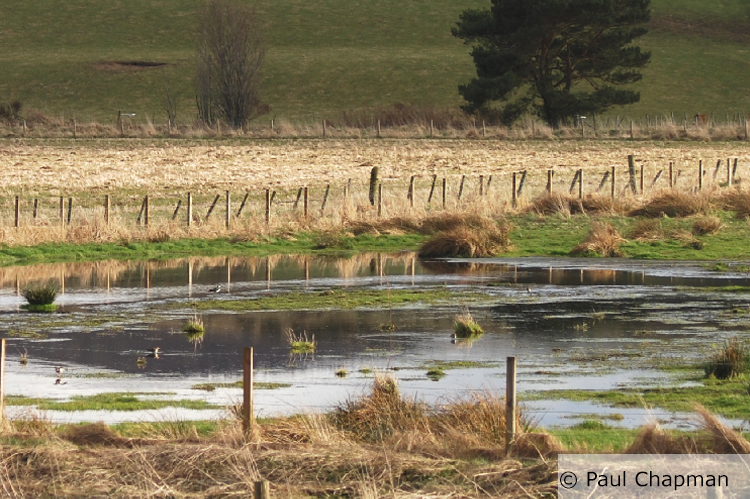
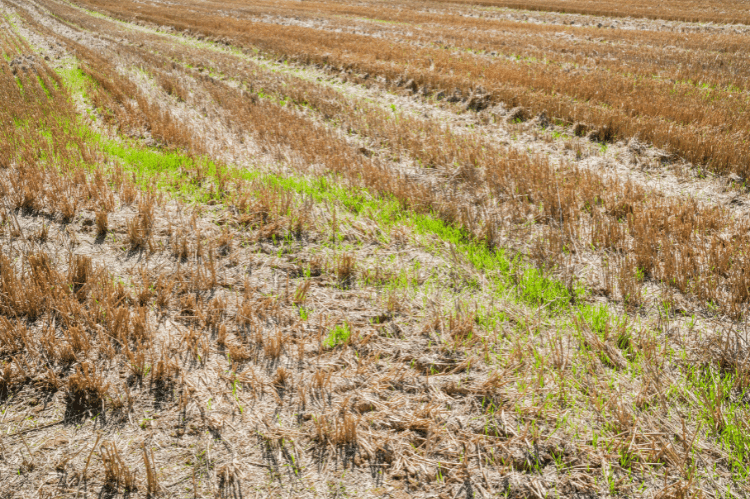
Find out more:
Key actions for improving resources for bees on the farm, croft or garden - We have listed the key action points for improving resources for bees on your farm, croft, or garden. This is of great importance not only for beekeepers and bee farmers, but also for landowners, farmers, crofters, or neighbours as everyone can contribute to creating bee-friendly environments, habitats and resources for bees and other pollinators.
Badgers, Bats and Beavers: Farming with protected wildlife – Practical Guide - Farming and land management can impact on wildlife species that have legal protection, including the places where they live. This practical guide outlines the implications for farmers of this protection for three of the key species. It provides information about the situations where farmers need to be aware of the law and the licensing process that allows activities to be safely carried out without risk of breaking the law.
Hedgerow Management - In the series “Hedges – Carbon, Conservation & Compliance” we have developed a range of materials to aid and inform decision making. These materials include Technical Note (TN738); a podcast with countryside manager Nigel Adams, and a video highlighting some of the benefits and important factors to consider when managing farmland hedges
- Multi-species Sward Tool - All fields are unique, this FAS tool lets you input attributes of your field. The tool will then provide a list of species to consider including in a mixture . The tool will provide a brief description of the species and their attributes and the benefits they can bring you and your wildlife. The final mix will depend on your objectives for the field.
Scotland’s National Priority Species - find out more about some of Scotland's species of concern and how land managers, farmers and crofters can play their part in reducing any further decline in numbers.
Boosting Biodiversity to Build Business - Increasing biodiversity of both the farm environment and what it produces, is seen as one of the ways in which farming businesses can remain sustainable in the future.
- Farmland birds - Small changes in farming practices and agri-environmental management can, however, benefit a wide range of farmland birds and help to reverse declines - find out more.
Sign up to the FAS newsletter
Receive updates on news, events and publications from Scotland’s Farm Advisory Service
